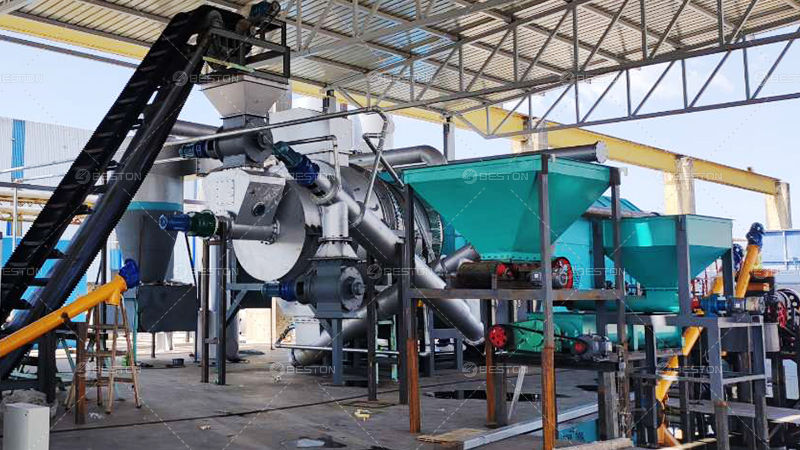Strategic Outlook on Biochar Carbon Removal Projects in Europe
- arbourz
- May 7
- 3 min read
The European market is witnessing accelerated momentum in biochar carbon removal (BCR) initiatives. Amid heightened environmental regulations and robust demand for carbon-negative solutions, biochar has emerged as a viable asset in the portfolio of decarbonization technologies. Central to this shift is the growing deployment of advanced biochar production equipment configurations, enabling scalable and verifiable carbon removal processes.
Regulatory Incentives and Climate Commitments
Europe’s decarbonization trajectory is defined by the European Green Deal, aiming for net-zero emissions by 2050. In this context, biochar holds dual appeal—sequestering atmospheric carbon while enhancing soil productivity. The European Union’s alignment with nature-based carbon removal pathways, alongside regulatory frameworks like the Carbon Removal Certification Mechanism (CRCM), is creating fertile ground for BCR deployment.
Carbon credit markets are also evolving. Voluntary carbon markets (VCMs) in the region have started to recognize biochar’s permanence and quantifiability, offering project developers tradable carbon assets. This monetization capability enhances the commercial feasibility of biochar operations, particularly when supported by third-party verification under methodologies such as Puro.Earth and Verra.

Feedstock Abundance and Process Scalability
Europe possesses a wide spectrum of lignocellulosic biomass suitable for pyrolysis—ranging from agricultural residues and forestry waste to organic municipal solid waste. Countries like Germany, France, and Finland have extensive forestry operations, generating ample feedstock for decentralized BCR units.
The adoption of continuous-feed biochar pyrolysis equipment systems facilitates uninterrupted processing and high throughput, crucial for achieving economies of scale. Modularity in reactor design allows tailored implementation, from smallholder setups in rural Spain to large-scale installations in industrial parks across the Netherlands.
Economic Viability and Value Chain Integration
Beyond carbon credit revenues, BCR projects tap into diverse revenue streams. Biochar itself is increasingly recognized as a high-value input in regenerative agriculture, animal husbandry, water filtration, and green construction. This multipurpose utility ensures that even in the absence of carbon finance, biochar production retains market relevance.
Several startups and incumbents are integrating biochar machines with biorefinery platforms, producing co-products such as syngas and bio-oil. These co-products can offset energy needs or be refined further into bio-based chemicals, enhancing the overall financial resilience of the operation.
Moreover, biochar’s inclusion in national circular economy strategies—particularly in Austria, Denmark, and Sweden—reinforces government support through grants, tax incentives, and pilot funding.
Technological Advancements and Supply Chain Optimization
European engineering firms are spearheading innovation in pyrolysis reactor design. Developments include oxygen-limited combustion chambers, intelligent temperature profiling, and automated feedstock handling systems. These features not only improve biochar yield and consistency but also minimize operational risks such as tar buildup and gas leakage.
Integration with digital monitoring tools—IoT sensors, SCADA systems, and blockchain-based tracking—further enhances transparency and trust, especially in carbon credit transactions. Such traceability is essential for buyers concerned with the permanence and legitimacy of carbon offsets.
Local manufacturing of biochar machine components reduces logistical bottlenecks and fosters regional supply chains. This de-risks project deployment and aligns with European efforts to reduce dependency on external equipment suppliers.
Regional Hotspots and Investment Trends
Germany and the Nordic countries are currently leading in BCR adoption, owing to their strong environmental governance and proactive bioeconomy strategies. Meanwhile, Southern European nations, particularly Italy and Greece, are exploring biochar as a soil remediation tool in response to land degradation.
Private capital is flowing into BCR projects through climate tech venture funds and green infrastructure investors. Institutional interest is being driven by the potential for measurable climate impact combined with tangible product outputs.
Additionally, corporate buyers with ESG mandates are increasingly sourcing biochar carbon credits to offset residual emissions, thereby stimulating demand-side momentum.









Comments